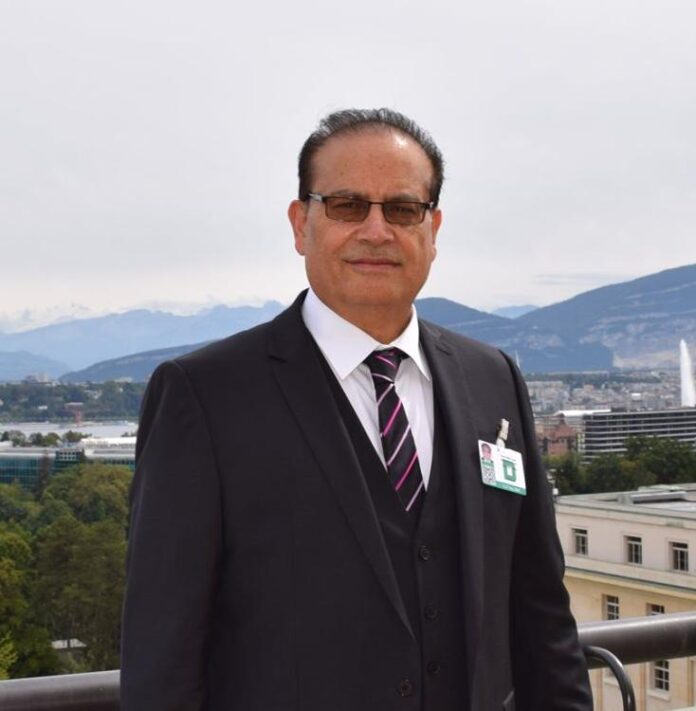Qamar Bashir
When tragedy struck in Pahalgam on April 22, Prime Minister Narendra Modi seized the moment—not for justice or truth, but for electoral gain. Assuming the roles of victim, judge, and executioner, Modi promptly blamed Pakistan without investigation, forensic inquiry, or evidence. In doing so, he shielded India’s bloated security establishment from scrutiny and used the incident to ignite nationalist passions just ahead of elections.
On May 12, in his first national address since the escalation began, Modi resurfaced to glorify “Operation Sindoor” as a surgical strike on terror. He painted a picture of technological precision, national unity, and decisive leadership. He boasted of eliminating over 100 terrorists and destroying terror camps in Bahawalpur and Muridke, celebrating India’s new doctrine of proactive defense. But the actual events bore little resemblance to this narrative.
Modi claimed that Operation Sindoor had carved a new benchmark in India’s fight against terror, framing it as a new normal. What he didn’t admit was the colossal failure of India’s intelligence and defense apparatus, and the devastating retaliation India faced from a militarily and economically smaller Pakistan. Instead of acknowledging the risks he plunged the region into—and the global threat such recklessness posed—he offered a hollow narrative that concealed more than it revealed.
In reality, India’s multi-pronged strikes by air, land, and sea killed no terrorists. They destroyed civilian homes, mosques, and empty fields. No confirmed terrorist casualties were reported. It was a spectacle designed for optics, not justice.
Then came the shock: on the very first day of hostilities, six Indian fighter jets, including three much-hyped Rafales, were downed by Pakistan’s lean but precise Air Force. A smaller, resource-constrained Pakistan had exposed the hollowness of India’s military bravado. Indian forces launched waves of drone and missile strikes, but Pakistan’s air defenses stood firm. Retaliatory strikes by Pakistan targeted and damaged Indian military infrastructure, shaking the very myth of India’s invincibility.
Between his lines, Modi hinted at the scale of Pakistan’s retaliation. He admitted that Pakistani forces struck military bases, schools, temples, gurdwaras, and other sites—though framed them as attacks on civilians. He emphasized that India’s air defenses shot down Pakistani drones and missiles, but these assertions rang hollow against the verified losses and visible destruction within Indian territory.
What he deliberately omitted was the fact that several Indian missiles misfired and landed within Indian-administered Kashmir and East Punjab, killing and maiming civilians—a damning failure of India’s command and control systems.
Crucially, Modi ignored how India had to turn to Turkey, Iran, Saudi Arabia, and the United States to plead for de-escalation. While portraying Pakistan as the one seeking ceasefire, it was India—bloodied and embarrassed—that sought mediation. Modi attempted to mask this diplomatic retreat by saying it was Pakistan that “contacted our DGMO” and “begged for peace,” but the timeline and international reports suggested otherwise.
From May 5 to May 10, the Prime Minister vanished from public view. In those tense days of peak escalation, Modi chose silence. His disappearance was not tactical restraint but a tacit admission of miscalculation. When he finally returned to deliver his May 12 speech, it was less a declaration of victory and more an exercise in damage control.
His rhetoric turned to nuclear threats and pseudo-moral posturing. He vowed to respond to future attacks on Indian terms, claimed that India would no longer tolerate nuclear blackmail, and blurred the lines between governments and terrorists. He decried Pakistani officers for offering funeral prayers for those killed, presenting it as evidence of state-sponsored terrorism. Yet, the speech revealed more desperation than dominance.
He further championed India’s “Made in India” weapons and New Age Warfare capabilities, asserting that the operation validated indigenous defense manufacturing. However, it was evident to the world that India’s weaponry failed to protect its skies or maintain strategic superiority. Most ironically, some of those weapons malfunctioned and fell on Indian soil—a bitter embarrassment Modi dared not mention.
Perhaps the most overlooked and revolutionary aspect of this confrontation was Pakistan’s demonstration of indigenously developed soft warfare capabilities. Pakistan showcased its ability to launch effective cyberattacks, disrupt unmanned aerial vehicles midair, and induce critical errors in India’s missile command and control systems. Using precision electronic warfare tools, Pakistan successfully diverted, reprogrammed, and redirected multiple Indian missiles midflight, neutralizing their threat without conventional interception. Moreover, it identified and targeted high-value military assets in real time using its sophisticated soft skills architecture.
This capability—honed quietly over years—has now catapulted Pakistan into the ranks of countries mastering the next-generation battlefield. It may well be the first nation to have demonstrated such multi-domain, integrated, soft offensive capabilities in a live conflict. These assets played a decisive role in establishing Pakistan’s air, land, and sea superiority during the conflict, negating India’s numerical and technological advantages.
One particularly dangerous narrative that Modi had often championed before this conflict—the threat to divert rivers flowing from India into Pakistan—has now been permanently shelved. The harsh lesson taught by Pakistan during this war has ensured that weaponizing water will remain a non-option. The idea of choking Pakistan’s lifeline has backfired, permanently.
Despite his thunderous declarations, Modi could not undo the most significant outcome of this conflict: the re-internationalization of the Kashmir issue. For years, India had worked to suppress international discourse on Kashmir. But now, thanks to its own aggression, Pakistan gained sympathy, legitimacy, and diplomatic traction. U.S. President Donald Trump once again offered mediation, forcing India to confront the very topic it sought to bury.
Operation Sindoor, contrary to Modi’s celebratory framing, will be remembered not as a triumph but as a strategic blunder. It exposed the limitations of India’s military, the hollowness of its regional hegemony claims, and the perils of using warfare as an electoral tool.
India’s dream of uncontested regional supremacy has been reduced to rubble. Its myth of military superiority lies shattered. The chest-thumping nationalism that sought to project dominance has instead exposed deep vulnerabilities. From this humiliation, India may take years to recover—if at all. For now, the illusion of the subcontinent’s sole superpower has gone up in smoke, replaced by wreckage, remorse, and rhetorical retreat.
Qamar Bashir
Press Secretary to the President (Rtd)
Former Press Minister at Embassy of Pakistan to France
Former MD, SRBC
Macomb, Detroit, Michigan, USA
















